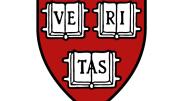Harvard College announced today that 2,037 students have been offered admission to the class of 2020 (including the 918 previously notified that they were granted early-action admission). The College received 39,041 applications, up 4.6 percent from the 37,307 candidates last year. The admission rate accordingly declined modestly, to 5.2 percent, from 5.3 percent in the prior year. (For a time series of applications, admissions, and admissions rates, consult the Harvard University Fact book here.)
In the College news release, dean of admissions and financial aid William R. Fitzsimmons observed that, “For the class of 2020 admissions, economic diversity has increased, and records were set for both African-American and Asian-American students.” The release went on to amplify that “A record 14 percent of the admitted students are African-American and 22.1 percent are Asian-American, also a record. Latinos are 12.7 percent after last year’s record 13.3 percent; Native Americans are 2.2 percent (1.5 percent last year) and Native Hawaiians 0.4 percent (0.5 percent last year).” Of the admitted students, 48.4 percent are women (up fractionally from last year), and about 15 percent are first-generation college students.
As for their expressed interests, “Compared to last year, larger percentages of admitted students intend to concentrate in the humanities (16.9 percent vs. 14.8 percent), engineering (14 percent vs. 12.4 percent), math (7.5 percent vs. 6.4 percent), physical sciences (7.3 percent vs. 6.9 percent), and computer science (7.2 percent vs. 5.9 percent). There were declines in the social sciences (21.9 percent vs. 26 percent), biological sciences (18.9 percent vs. 20.1 percent), and undecided (6.4 percent vs. 7.6 percent).”
Looking only at their quantitative credentials, the release noted, “About 13,600 students scored 700 or above on the SAT critical reading test; 15,700 scored 700 or above on the SAT math test; 13,600 scored 700 or higher on the SAT writing test; and 3,300 were ranked first in their high-school classes.”
The Admissions Frenzy
Perhaps reflecting a bit of a backlash during a populist moment in the nation’s history, the annual frenzy surrounding the admissions decisions by selective institutions elicited some notable comment this week. New York Times columnist Frank Bruni skewered the process (“College Admissions Shocker!”) by imagining Stanford achieving admissions heaven by rejecting every applicant to the class of 2020. Sample passage:
“We had exceptional applicants, yes, but not a single student we couldn’t live without,” said a Stanford administrator who requested anonymity. “In the stack of applications that I reviewed, I didn’t see any gold medalists from the last Olympics—Summer or Winter Games—and while there was a 17-year-old who’d performed surgery, it wasn’t open-heart or a transplant or anything like that. She’ll thrive at Yale.”
(Where You Go Is Not Who You’ll Be, Bruni’s recent book on admissions, was reviewed recently in Harvard Magazine.)
Separately, a FiveThirtyEight analysis suggested that journalists cover the nation’s non-selective institutions of higher education, where the overwhelming majority of students are enrolled.
The Term Bill
The announcement of the coming year’s undergraduate term bill—tuition, room, board, and fees—traditionally accompanies the admissions statistics. This year, it was released earlier in the week, when the College disclosed that the term bill will rise to $63,025, up 3.9 percent—or $2,366—from $60,659 in academic year 2015-2016. (This represents a slight acceleration from the prior year’s 3.5 percent increase; the fact book provides a time series of undergraduate term bills extending back to 1985—when the bill, not adjusted for inflation to today’s dollars, was $14,100. The bill crossed the $20,000 threshold in academic year 1991; $30,000 in 1998; $40,000 in 2006; $50,000 in 2011; and $60,000 in the current year.)
An Aid Experiment
The list price, of course, does not reflect any financial aid. Harvard College remains free for students from families whose income is less than $65,000; for those with family incomes of up to $150,000 and typical assets, the term bill grades up to 10 percent of income.
In the tuition announcement, the College also disclosed an experimental “start-up” grant. For students enrolling this fall whose family income is $65,000 or less—about 20 percent of the anticipated matriculants—a $2,000 grant will be awarded, in equal sums at the beginning of each semester. These funds are atop current awards, and are unrestricted, so students can use them to participate in social activities, go out for meals, or spend on any other purpose they choose. (Existing financial-aid packages and other funds, the College reports, included $3.3 million in 2015 to help low-income students pay for health insurance, course books, travel costs, winter coats, and admissions to events and performances; the new grants thus supplement the existing financial support.)
The grants are intended to ease students’ transition to life at the College, enabling them to participate fully in the academic experience and other resources Harvard offers.
The program is described as experimental: a three-year trial is planned, for freshmen entering this fall and in the College classes of 2021 and 2022. Undergraduate aid has been budgeted at about $170 million for the past few years. This enhancement is limited both as a three-year pilot (during which students’ transition to their new environment can presumably be assessed), and in aggregate cost. Assuming that one-fifth of each entering class qualifies, the additional outlay is about $660,000 for each of the three years—a modest increment compared to a structural change in the aid formula, such as raising the family income threshold for free attendance.
Data in the announcement detail aggregate financial-aid spending since 2005, when the present aid system was adopted. During that period, the College has succeeded in attracting more applicants overall, and in enrolling a larger proportion of students from lower-income families and students who are the first members of their families to pursue a college degree. In this year’s election for members of the Board of Overseers, a group of petition candidates is campaigning on a platform of abolishing tuition for all students; they argue that the list price of attendance inhibits applications from lower-income families, and that the financial-aid system is too complex, discouraging efforts to attract a more socioeconomically diverse undergraduate class.









